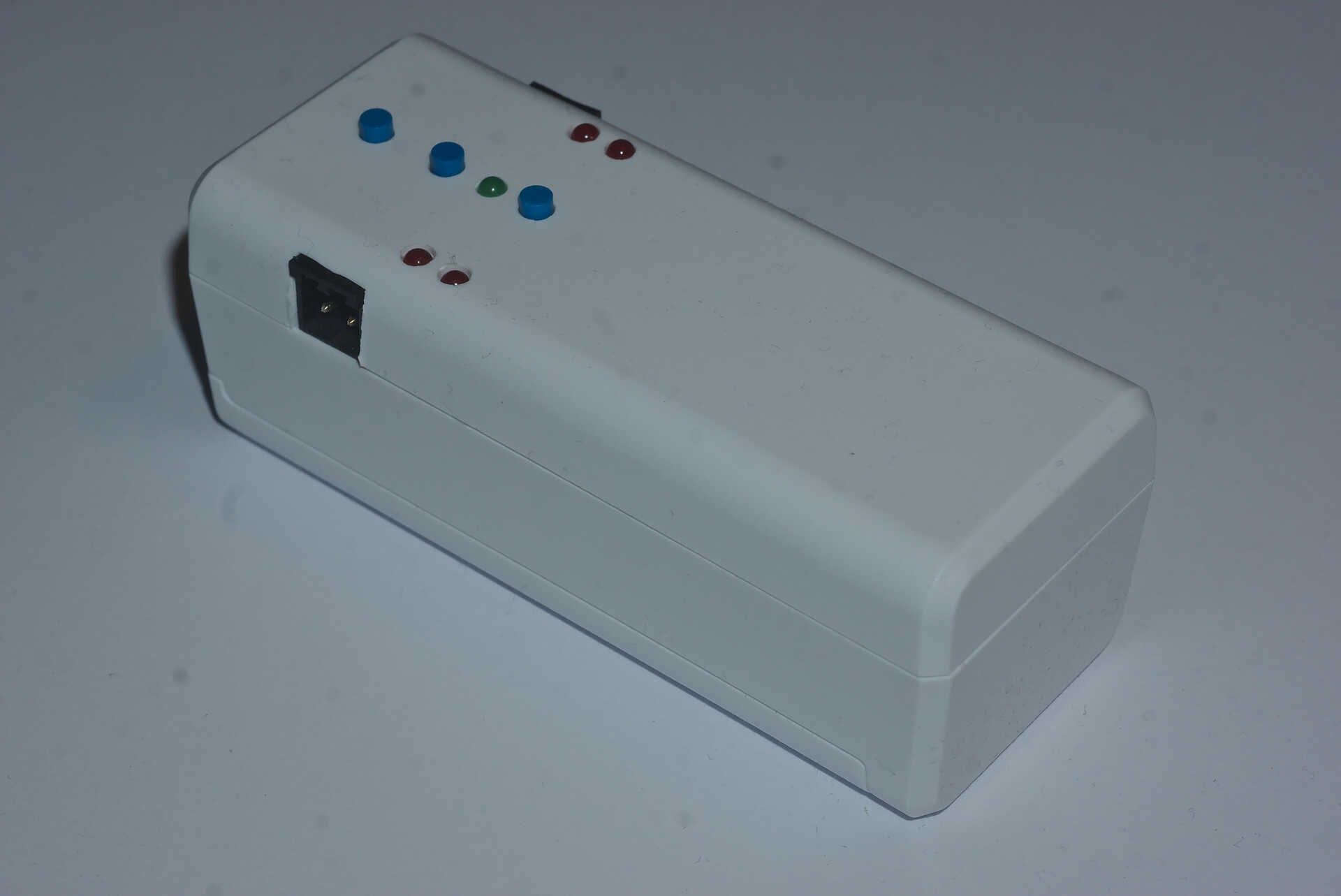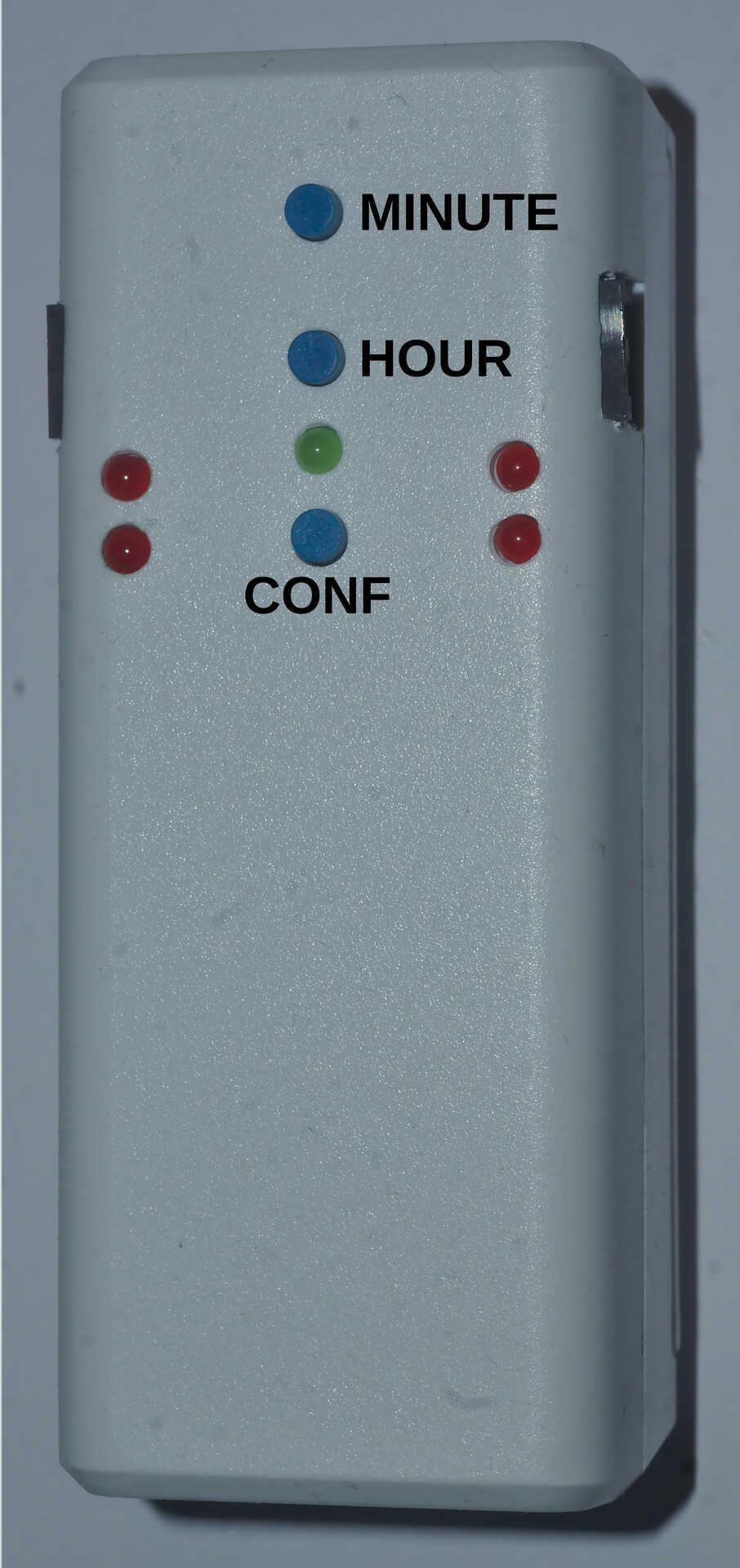
Abstract
This document describes the usage and configuration of the WiFi-JMRI-Clock - a device intended for model railroads to fetch the current "model time" from a wiThrottle server and adjust a cheap analog wall clock to the same time and rate. It also contains schematics and BOMs for the device as well as programming instructions and assembly tips.
The most recent version of this document can be found at https://newheiko.github.io/WiFi-JMRI-Clock, https://github.com/newHeiko/WiFi-JMRI-Clock/raw/master/documentation/docu_en.pdf and https://github.com/newHeiko/WiFi-JMRI-Clock/blob/master/documentation/docu_en.adoc.
Usage
Inserting a pair of AA batteries will start up the WiFi-JMRI-Clock and begin driving the two clock outputs as configured. The device will try to connect to a WiFi network for 60 seconds (if one is enabled in the configuration), then after successful WiFi connect it will connect to a JMRI wiThrottle server on the network. In case no preconfigured WiFi network can be found during those 60 seconds, the device will switch to AP mode and open an access point itself to allow configuration.
| LED pattern | Status |
|---|---|
Slow blinking (0.5Hz) |
Attempting to connect to WiFi network |
Fast blinking (2Hz) |
Successful connection to WiFi network, attempting to connect to wiThrottle server and get time |
Steady off |
Successful connection to WiFi network and wiThrottle server, at least one time info packet received |
Steady on |
Successful connection to WiFi network, configuration mode |
On, flickering off every 2s |
No success connecting to WiFi network, setup access point for configuration |

The green LED and its blink patterns, as described in LED status and its meaning for the WiFi-JMRI-Clock, will allow some basic diagnosis of this process. The red LEDs are connected directly to the clock outputs, so they will flicker in sync with the pulses output to the clock.
The device will keep a total of three internal clocks running, two to keep track of the clocks connected to the two outputs and one to keep track of network time. The startup time and startup rate of each of the connected clocks can be set individually through the configuration website and the network time will start in sync with the first clock and at the same rate until the first time info packet has been received from the wiThrottle server.
There are three pushbuttons on the WiFi-JMRI-Clock, as shown in Controls and features of the WiFi-JMRI-Clock. The upper two offer a quick way to adjust the time on both connected clocks by a minute or an hour respectively and the third will enable/disable configuration mode when the device is connected to a wiThrottle server.